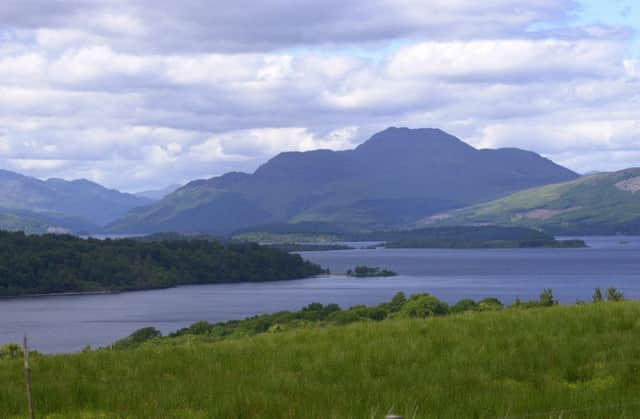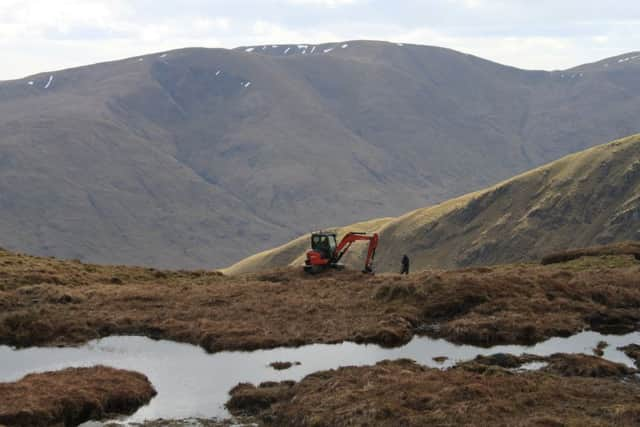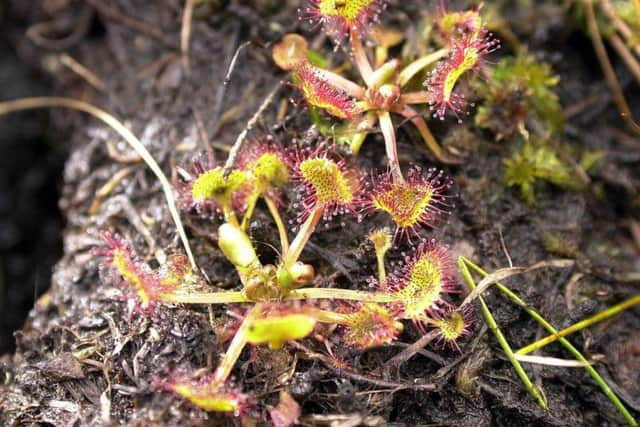Peatlands rescue plan battles climate change


The cash has been awarded to Loch Lomond and Trossachs National Park to restore around 35 square kilometres of internationally important peatlands to good condition.
Scotland is home to around 60 per cent of all the UK’s peatlands. They are globally recognised for their biodiversity, supporting rare moorland breeding birds and unusual plants, such as the insectivorous sundew and butterwort.
Advertisement
Hide AdAdvertisement
Hide AdFormed over thousands of years, they are also one of the nation’s most important natural assets in terms of the ecosystem services they provide.


As well as offering a home for nature, bogs play a key role in water quality and flow. And in a healthy state, peat is an essential weapon in the fight against climate change, acting as a massive sink for greenhouse gases.
Scotland’s peat bogs store ten times more carbon than all of the UK’s forests combined – the equivalent of 16,200 million tonnes.
Healthy bogs are valuable regulators of water as they can soak it up like a sponge and then release it slowly and steadily, lowering the risk of flooding.
However, degraded peatlands can release large amounts of carbon dioxide into the atmosphere.


Across the world, large-scale degradation is causing serious environmental and social impact, with annual emissions estimated at around two gigatonnes of carbon dioxide – 10 per cent of all global emissions. Rewetting damaged peatlands can bring them back to good condition.
The new money is part of a recent £3 million in extra funding from the Scottish Government for the national Peatland Action scheme.
It will be spent on conservation measures including landscaping to reduce exposed peat and the installation of peat dams to restore water levels in blanket bogs, which are vital to carbon capture and provide habitats for many important Scottish species.
Advertisement
Hide AdAdvertisement
Hide AdRestoration sites include Beinn Dubh, above Glen Luss, Auchtertyre, near Strathfillan, and Glen Dochart, at Crianlarich.
Work will involve blocking gullies to prevent the earth from drying out and releasing carbon into the atmosphere. Eroded areas of bare peat will also be re-planted to stabilise the surface.
These measures will improve mountain vegetation, which will in turn benefit native wildlife and birds such as the snipe, skylark and greenshank.
Simon Jones, director of conservation and visitor operations at Loch Lomond and the Trossachs National Park, has welcomed the new funding.
“We are delighted that land in the park will benefit from further support for this important work to help tackle climate change and protect our valuable natural capital,” he said.
“Peatlands take thousands of years to form, but can become eroded through a combination of the elements and overgrazing by livestock and wild deer.
“These projects require significant manpower and machinery, and national park staff will now work with the landowners to start the restoration process as soon as possible.”
Luss Estates and Scotland’s Rural College (SRUC) have previously received funding from Peatland Action with help from the national park, which enabled restoration work to begin in 2015.
Advertisement
Hide AdAdvertisement
Hide AdProfessor Davy McCracken, head of the Hill and Mountain Research Centre at SRUC, said: “Restoring damaged peatland helps ensure that bogs on our farms act as a long-term sinks rather than generators of greenhouse gases.
“However, this also provides our national park colleagues with a golden opportunity to highlight the importance of peat bogs to land managers, advisers and the general public.”
Iain Wilkinson, rural business manager at Luss Estates, added: “We are delighted to have received this second tranche of funding for peatland restoration, which will allow us to complete the original project on Beinn Dubh and Mid Hill.
“This project highlights the tangible environmental improvements that can be achieved through collaborative partnership working, and we are pleased to be making a contribution to carbon sequestration and Scottish Government targets as a result.”
Peatland Action is an initiative run by government agency Scottish Natural Heritage that will contribute to the objectives of Scotland’s National Peatland Plan, which was published in August.
Mountain bog restoration is one of five key projects in the national park’s conservation action plan, which runs until the end of the decade.